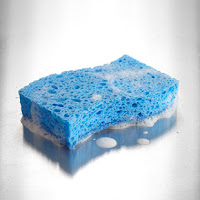Every year, 76 million Americans get sick from food, according to the Centers for Disease Control. Nothing you can do will ever guarantee 100 percent protection against foodborne illness, but taking certain precautions can help reduce your risk. Some of these protective steps are common sense, like washing your hands before you eat. Others aren’t so obvious. Read on to discover five surprising sources of food borne “bugs” in your kitchen, and how to protect yourself.
1. Your Kitchen Sponge
When participants in a study from NSF International (an independent public health organization) swabbed various items in their houses, the kitchen sponge was by far the germiest. In fact, it harbored 150 times more bacteria, mold and yeast than a toothbrush holder. “You pick up bacteria when cleaning, but because you rarely disinfect that sponge between uses, germs multiply,” says Rob Donofrio, M.S., Ph.D., NSF’s director of microbiology. While the majority of germs they found won’t make you sick some, such as Salmonella and E. coli, can cause serious illness. The best way to de-germ your sponge: microwave a wet sponge for two minutes daily and replace it every two weeks.
2. Your FridgeCold temperatures slow the growth of bacteria, so it’s important to make sure that your refrigerator doesn’t dip below 40°F. Reduce your risk of food borne illness by keeping tabs on your fridge temp with a thermometer. You can buy a “refrigerator/freezer thermometer” at appliance stores, home centers (e.g., Home Depot) and online kitchen stores.
3. Cutting Boards
Bacteria from uncooked meat, poultry and fish can contaminate cooked foods and fresh produce. An important way to reduce this risk is to use separate cutting boards for raw meat/poultry/fish and produce/cooked foods.
4. Uncooked Eggs
5. Recalled Items
You should discard any food that’s been recalled because it’s associated with the outbreak of a food borne illness. But according to a survey conducted by Rutgers University, only about 60 percent of Americans search their homes for foods that have been recalled because of contamination. Whenever there’s a food recall, check products stored at home to make sure they are safe.




No comments:
Post a Comment
Note: Only a member of this blog may post a comment.